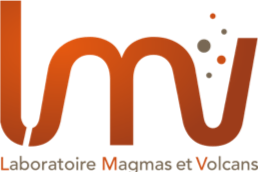
- Cet évènement est passé.
Séminaire de Christian Renggli
30 mai 2017 à 14 h 00 min - 15 h 00 min

Mardi 30 Mai à 14h dans la salle des séminaires (1.10) : Christian Renggli (Research School of Earth Sciences at the Australian National University)
Gas-solid reactions in high temperature planetary environments – An experimental investigation of SO2-silicate glass reactions.
Sulfur dioxide is the most abundant sulfur bearing volcanic gas species on Earth, with approximately 10 Mt SO2 emitted on average globally each year. From its largely magmatic source at depths of 3 to 6 km below the surface, SO2 expands through the subvolcanic environment where it interacts with volcanic rocks at high temperature.
Here we present results from an experimental study on reactions between SO2 and silicate glasses in the system anorthite-diopside-albite and natural basaltic glasses. The aim of the study is to identify how SO2 + glass reactions occur at volcanoes and what might promote and limit these reactions. This information is needed to understand how planetary crusts form. Experiments were performed at 600 – 800 °C and 1 bar for 10 minutes to 72 hours. Results from electron microscopy, Raman spectroscopy, solution ICP-MS and nano-SIMS suggest that the structural property of the silicate glass substrate controls the diffusive transport of Ca and Mg to the glass surface which in turn controls the overall reaction rate and the formation of sulfates.
The reaction between SO2 and silicate rocks results in the disproportionation of the sulfur to form oxidized sulfate and reduced sulfide. This reaction is a key process in the formation of porphyry copper and gold deposits (Henley, King & Wykes et al., 2015). In explosive volcanic eruption plumes SO2 reacts with volcanic ash and is scavenged onto ash particles (Ayris et al., 2013). Similarly, SO2 is a major volcanic gas in volcanic eruptions on Venus and Jupiter’s moon Io (e.g., Fegley & Prinn, 1989, Johnson & Burnett, 1993, Burnett et al., 1997) and on Mars in past eruptions. Thus, reactions between SO2 and rocks may have altered the composition and mineralogy of the crusts on these planetary bodies.


